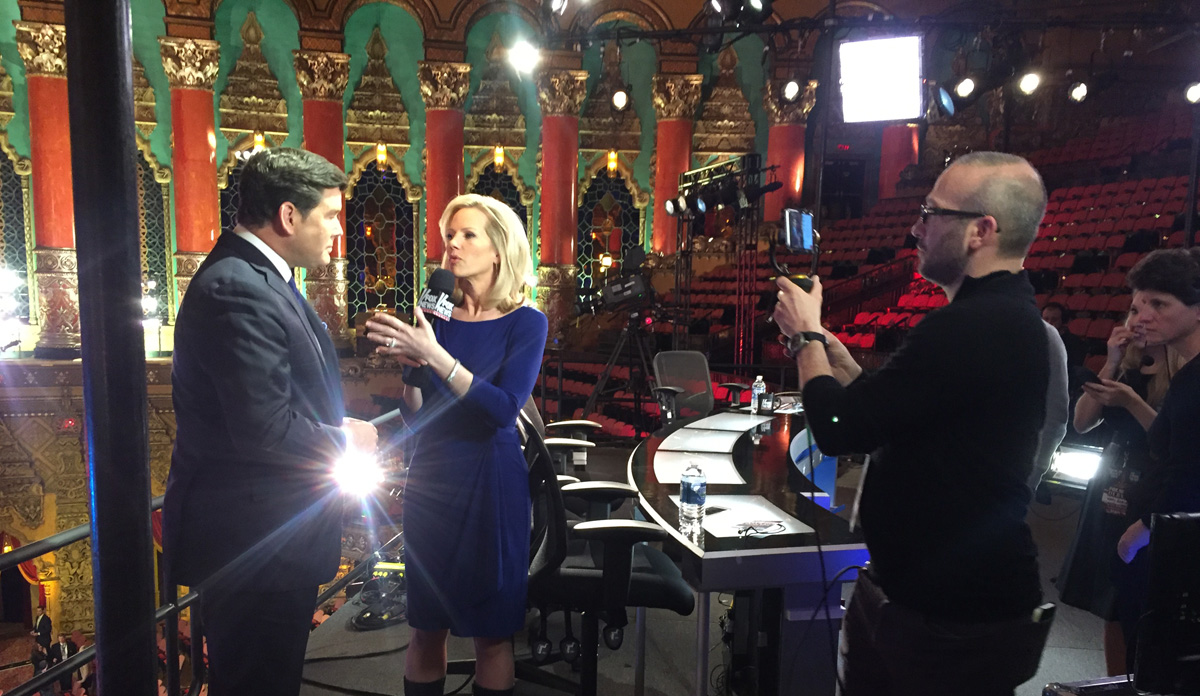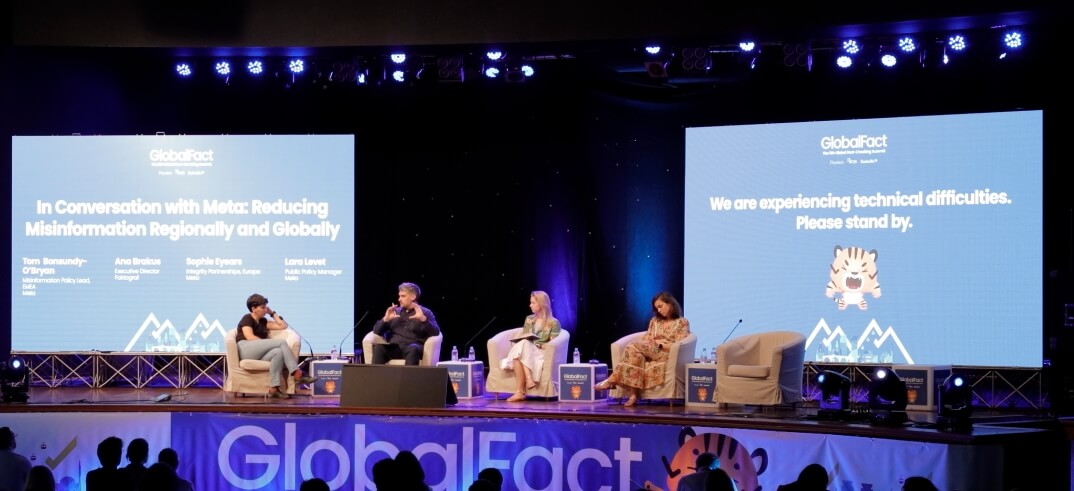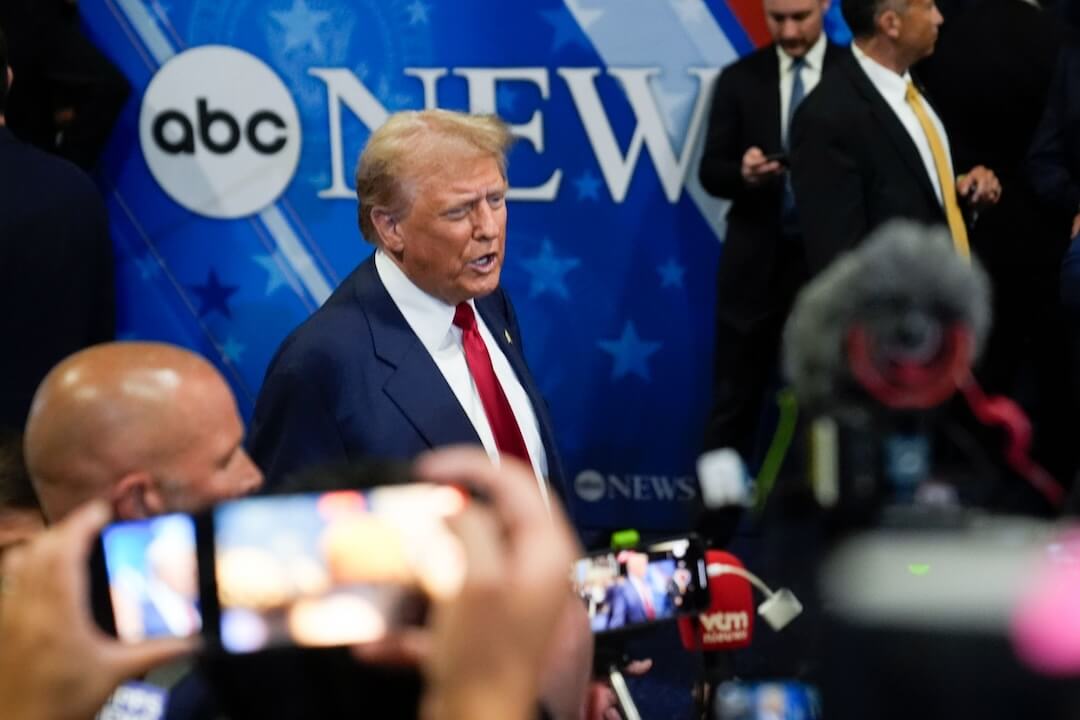For many news organizations, especially those with tiny staffs, doing online video well is a particularly vexing problem.
First, there’s the cost of buying equipment, which cash-strapped newsrooms can’t always stomach. Then there’s the technical challenge of conceiving, shooting and editing a compelling video amid daily newsroom chaos. And for print and online news outlets, whose journalists aren’t accustomed to broadcast news, there’s often a cultural barrier to getting in front of the camera and reading from a script.
One possible solution to these hurdles? Just do it live.
Since Facebook Live became widely available earlier this year, news organizations have been experimenting with the social network’s livestreaming tool to draw audiences into impromptu broadcasts tied to their Facebook pages.
Because Facebook’s News Feed algorithm puts more emphasis on livestreaming, broadcasts tend to draw a wide audience — which is another incentive for publishers seeking to maximize their reach. The downside: Facebook does not currently allow publishers to monetize these videos, which means news outlets are spending energy on streaming purely for the sake of increasing their exposure.
Still, it’s not hard to see why Facebook Live has proved alluring. The only equipment required is a smartphone with the Facebook app. There’s no editing or post-production adjustment necessary, which cuts way down on the time required to produce a video. And most journalists — broadcast, print and Web — are becoming increasingly comfortable with informal, off-the-cuff video through apps like Skype, Facetime and Snapchat.
It’s still early days for Facebook Live, which has only seen mainstream use for about two months. We asked several news organizations — NPR, The Verge, BuzzFeed and KXLY4 News, a TV station in Spokane — to explain how they’re using Facebook Live to engage their audiences and extend their social reach.
NPR
NPR has only done a handful of Facebook Live videos so far, including a livestream from its newsroom on Mega Tuesday and impromptu coverage of the SXSW music festival in Austin.
Although the public radio network doesn’t yet have enough content to do a full analysis, early results seem promising when compared with other Facebook posts, said Lori Todd, a social media editor at NPR.
“Our Facebook Live video on Mega Tuesday, compared to a produced and edited Facebook video on a Super Tuesday, for example, had thousands more comments and seven times the view duration.”
The tool has allowed NPR to reach highly engaged fans in the moment and facilitated reporter-audience interactions better that other similar tools, Todd said. During NPR’s Mega Tuesday broadcast, the network fed hosts questions from the audience that came in via Facebook Live comments.
NPR has not established a prescribed length for its livestreams, but staffers have set an aspirational goal of 10 minutes per stream, Todd said. Longer livestreams typically reach more audiences because they allow news organizations to pick up views as the broadcast progresses.
“A two-minute Facebook Live post will have a lot less of an audience than a 10 minute post,” Todd said. “That said, our Mega Tuesday post was 34-minutes long and while that worked for the content, we definitely wouldn’t aim for 30 minutes on every Live video.”
There have been some early complaints from Facebook users about how the social network is handling notifications for Live, Todd said. Ultimately, NPR’s social media desk has come to the realization that it needs to formulate a plan for creating compelling broadcasts.
“Facebook has built the tool to be accessible to the most people possible — all you need is your phone and the Facebook app — but we’ve been consulting with our engineers to find ways to improve our audio and visuals for Facebook Live.”
The Verge
The Verge, Vox Media’s tech and culture vertical, has been hosting two main types of streams: live reports from major events like product releases and in-office question-and-answer sessions to demo products and discuss important issues, said Helen Havlak, engagement editor at The Verge.
Tips for going live
- Tell your fans before you broadcast
This builds anticipation in advance of your livestream.
- Don’t be afraid to go long
You’ll accumulate views and comments as your broadcast progresses.
- Cross-promote to gain likes
If you have a high-profile personality working for your news organization, ask them to go live from their Facebook page.
- Take questions from your audience
One way to boost engagement is to ask — and answer — questions from livestream viewers.
- Make sure your description is on point
Before you go live, make sure the description for the livestream — the equivalent of the headline — is catchy and compelling.
“We’ve shared the first video of the year’s biggest smartphones (Galaxy S7 and iPhone SE), been on the scene at Uber protests, helped people understand the security risks of NYC’s new Wi-Fi hotspots, unboxed the latest drones, explained gravitational waves, and even tested new Oreo flavors,” Havlak said.
Thus far there have been a few upsides to using Facebook Live, Havlak said: The platform has drawn a large video audience, it’s allowed The Verge to cover breaking news instantly and it’s opened the door for spontaneous and entertaining moments. It also takes only a small time investment from producers and writers, Havlak said, which is a huge advantage over other types of online video.
There have been a few hiccups, however.
“Our biggest issues right now are finding a strong enough Wi-Fi signal when out in the field, and increasing video quality,” Havlak said. “We’d love to see support for other types of cameras with external microphones, and the ability to upload higher-resolution files.”
The Verge tries to broadcast for at least five minutes and aims for a sweet spot of between eight and 10 minutes, Havlak said. The digital outlet broadcasts between four and five times per week, a number she expects to increase.
Although there’s no direct financial benefit to going live, there are several secondary benefits that the for the livestreaming platform. The videos have typically garnered between 100,000 and 200,000 views, which Havlak described as a “huge win.”
“We’ve also found that video has the biggest impact on our Facebook page’s reach, engagement, and new follower acquisition, which in turn lifts our site referrals.”
BuzzFeed
So far, Buzzfeed has done about 70 Live videos across its various Facebook pages — Tasty, BuzzFeed Food, BuzzFeed News, BuzzFeed Video and BuzzFeed DIY. The top videos have drawn viewership in the millions (BuzzFeed Tasty’s Fondue Party, for example, racked up 5.2 million views) and thousands of comments.
BuzzFeed is still tinkering with Live in its ongoing bid to interact with the company’s audience in new and different ways, said Katie Rayford, a spokesperson for BuzzFeed.
“We’re a company that is always experimenting with new types and formats of media, and we’re really excited to learn more about live — what type of content our audience enjoys live, how we can use live in new and different ways, how we can interact more with our audience by creating live content,” Rayford said. “I will say that we’ve had a lot of success across a few of our different Facebook pages, including BuzzFeed, BuzzFeed News, BuzzFeed Video, Tasty, BuzzFeed Food, BuzzFeed DIY, Try Guys, among others, and it’s something we’re definitely looking to experiment more with.”
KXLY4 News, (Spokane, Washington)
KXLY-TV, an ABC affiliate in Spokane, Washington, has been experimenting with Facebook Live since the end of January for a variety of situations: A behind-the-scenes look at its newscast, a live question-and-answer session with its sports director in advance of selection Sunday and a breaking news press conference.
The engagement on KXLY-TV’s Facebook page on the night of the press conference was extremely high, said Melissa Luck, executive producer and director of social strategy at the station.
“People from throughout the area thanked us for bringing them the coverage, as it was a news conference about a man who shot a pastor in our community,” she said. “One reporter even Facebook livestreamed a ride-along with our Washington State Patrol in a story about emphasis patrols. The engagement was wonderful; our viewers could ask him questions and he answered in real-time.”
The draw of Facebook Live is simple, Luck said. People like watching things as they happen.
“It may not be as exciting as waiting for a baby eagle to hatch, but the spontaneous nature of live video is really most of its allure,” she said. “Also, it has given viewers a chance to interact directly with our reporters and anchors, and it has been beneficial for both sides of that video stream to have that interaction.”
There’s at least one potential downside to using Facebook Live as a reporting tool however: Sources might still be skittish about being suddenly broadcast for the world to see. Luck recently visited a class of police public information officers who were dubious about the prospect of being livestreamed.
“They were immediately skeptical; they worry about not being able to control what’s going on behind/around them and worry that we would show sensitive footage, like a SWAT team preparing to make entry, that could compromise their investigation,” Luck said. “I tried to assure them that we would adhere to the same broadcast rules we use for TV. I also shared that reporters should never live stream a conversation or interview without telling them up front.”






